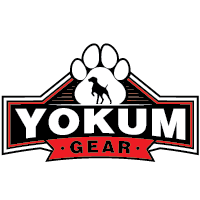Introduction
Modern dog crates have evolved far beyond the utilitarian cages of the past. They now come in a variety of styles, materials, and features that cater to both the aesthetic preferences of pet owners and the comfort needs of dogs. This ultimate guide explores the various types, benefits, and considerations when choosing a modern dog crate for your four-legged friend.
Types of Modern Dog Crates
Wire Crates
Wire crates are among the most popular choices due to their versatility and ventilation. They offer a clear view for both the dog and the owner, which can help reduce anxiety. These crates often feature removable plastic trays for easy cleaning and are collapsible for convenient storage and transport.
Plastic Crates
Plastic crates, also known as pet carriers, are commonly used for travel. They are durable, lightweight, and typically come with a handle for easy carrying. The enclosed sides offer a den-like environment that can make dogs feel more secure, though they may not provide as much ventilation as wire crates.
Soft-Sided Crates
Soft-sided crates are ideal for smaller dogs and for owners who need a portable, lightweight solution. Made from fabrics like nylon or canvas over a metal frame, these crates are easy to set up and collapse. They are great for travel but may not be suitable for dogs who like to chew or scratch.
Furniture-Style Crates
Furniture-style crates are designed to blend seamlessly with home decor. They often look like end tables or other pieces of furniture, making them a stylish choice for pet owners. Made from wood or composite materials, these crates can double as functional furniture while providing a cozy space for your dog.
Benefits of Using a Modern Dog Crate
Safety and Security
A crate provides a secure environment for your dog, keeping them safe from household hazards when you're not able to supervise. It also offers a private space for your dog to retreat and relax.
Training Tool
Crates are highly effective for house training puppies. Dogs have a natural instinct to keep their sleeping area clean, so they are less likely to soil their crate. A crate can also help with curbing destructive behavior by limiting your dog's access to the rest of the house when you're away.
Travel Convenience
Modern dog crates facilitate easier, safer travel. Whether you're taking a road trip or flying, a crate ensures your dog is secure during the journey. Many crates are designed to meet airline requirements for pet travel.
Key Features to Consider
Size
The size of the crate should be appropriate for your dog's breed and size. Your dog should be able to stand up, turn around, and lie down comfortably. Crates that are too large may negate the den-like feeling that can help dogs feel secure.
Material
The material of the crate can affect its durability and suitability for different environments. Wire and plastic crates are more durable and easier to clean, while soft-sided and furniture-style crates offer aesthetic and comfort benefits.
Ventilation
Proper ventilation is crucial for your dog's comfort. Wire crates offer the best airflow, while plastic and soft-sided crates should have ample mesh windows or openings. Ensure the crate is placed in a well-ventilated area of your home.
Portability
If you need to move the crate frequently, consider options that are lightweight and easy to collapse. Wire and soft-sided crates usually offer the best portability, whereas furniture-style crates are best left in one spot.
Conclusion
Choosing the right modern dog crate involves balancing your dog's needs with your lifestyle and aesthetic preferences. By understanding the different types, benefits, and key features of modern dog crates, you can make an informed decision that will keep both you and your furry friend happy. Whether for training, travel, or providing a secure home within your home, the right crate can be an invaluable tool for modern pet care.

